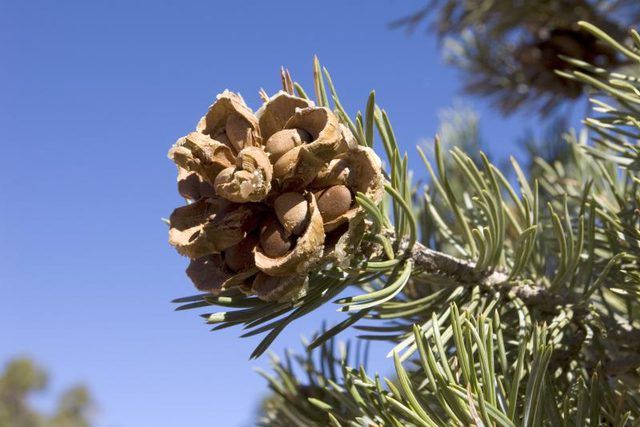Bulbs
Flower Basics
Flower Beds & Specialty Gardens
Flower Garden
Garden Furniture
Garden Gnomes
Garden Seeds
Garden Sheds
Garden Statues
Garden Tools & Supplies
Gardening Basics
Green & Organic
Groundcovers & Vines
Growing Annuals
Growing Basil
Growing Beans
Growing Berries
Growing Blueberries
Growing Cactus
Growing Corn
Growing Cotton
Growing Edibles
Growing Flowers
Growing Garlic
Growing Grapes
Growing Grass
Growing Herbs
Growing Jasmine
Growing Mint
Growing Mushrooms
Orchids
Growing Peanuts
Growing Perennials
Growing Plants
Growing Rosemary
Growing Roses
Growing Strawberries
Growing Sunflowers
Growing Thyme
Growing Tomatoes
Growing Tulips
Growing Vegetables
Herb Basics
Herb Garden
Indoor Growing
Landscaping Basics
Landscaping Patios
Landscaping Plants
Landscaping Shrubs
Landscaping Trees
Landscaping Walks & Pathways
Lawn Basics
Lawn Maintenance
Lawn Mowers
Lawn Ornaments
Lawn Planting
Lawn Tools
Outdoor Growing
Overall Landscape Planning
Pests, Weeds & Problems
Plant Basics
Rock Garden
Rose Garden
Shrubs
Soil
Specialty Gardens
Trees
Vegetable Garden
Yard Maintenance
How to Harvest Pine Nuts
How to Harvest Pine Nuts. Although they're not always readily available and they're expensive, pine nuts make a tasty treat or cooking ingredient. A number of pine trees (Pinus spp.) around the world bear edible nuts, but it's hard work to collect the cones and harvest the nuts they contain. It takes two or three years, depending on the species,...

Although they're not always readily available and they're expensive, pine nuts make a tasty treat or cooking ingredient. A number of pine trees (Pinus spp.) around the world bear edible nuts, but it's hard work to collect the cones and harvest the nuts they contain. It takes two or three years, depending on the species, for a female pine cone to develop harvestable seeds. Grow your own pines, or find stands of appropriate pine species on privately owned land -- get the owner's permission before you harvest -- or find wild stands of native, nut-bearing pines on land where it's legal to harvest.
Finding Harvestable Cones
If you're fortunate enough to live in the western U.S., you can harvest cones from wild pinyon trees. Rocky Mountain pinyon (Pinus edulis, which grows in U.S. Department of Agriculture plant hardiness zones 5 through 8) grows mainly in the eastern Rocky Mountains and single-leaf pinyon (Pinus monophylla, USDA zones 6 through 8) lives mostly in the Southwest. These are slow-growing trees, reaching cone-bearing size when they're about 25 years old. California has three species of pines with edible nuts. Italian stone pine (Pinus pinea, USDA zones 7 through 11) takes 10 to 20 years to bear cones.
Gathering Unopened Cones
The techniques for harvesting pine nuts are about the same for all the kinds of pines, except that pinyon pine cones contain a lot of pitch and are best collected wearing gloves to keep the pitch off your skin. You don't need a permit to collect wild pinyon cones if you're not going to sell them. Pinyon cones contain ripe nuts in September and October of their second year. Stone pine cones are ready in late winter or early spring of their third year when they're a deep brown color. Female pine cones are usually on higher branches, so use a ladder to reach them. The unopened cones may still be green, but contain ripe seeds. Follow general safety guidelines for using a ladder. Put the unopened cones in burlap bags.
Removing Seeds from Cones
To harvest the seeds from unopened cones, place the burlap bags containing the cones in the sun for several days, turning the bags daily. Once the cones have opened, shake the bags, dump them out, and collect the seeds. If the pine cones have opened on the tree and still contain the seeds, which you can see between the open cone bracts, put a tarp under the area you intend to harvest. Using a ladder, get close to the pine cones and knock the cones with a stick. The seeds should fall on the tarp. Gather them into cloth or paper bags. You can also pick the entire cones, although some of the seeds will drop out.
Harvesting the Nuts
Each seed contains one nut, covered with the hard seed coat. The seeds are usually dark brown. Light brown seeds usually don't contain a nut. The hard coat has to be removed to harvest the edible nut. Shell the nuts with a rolling pin to gently break open the nuts or individually shell nuts with a pliers or knife. Some pines have a tough seed coat that will be hard to crack. Separate the lighter shells from the heavier nuts by shaking them in a basket or sieve. Eat the nuts raw or roasted. Store them in airtight containers in the refrigerator or freezer. If you're eating Chinese pine nuts (Pinus armandii, USDA zones 6 through 9), you might experience pine nut mouth, where all food has a bitter, metallic taste for a while. Some people develop allergies to pine nuts.